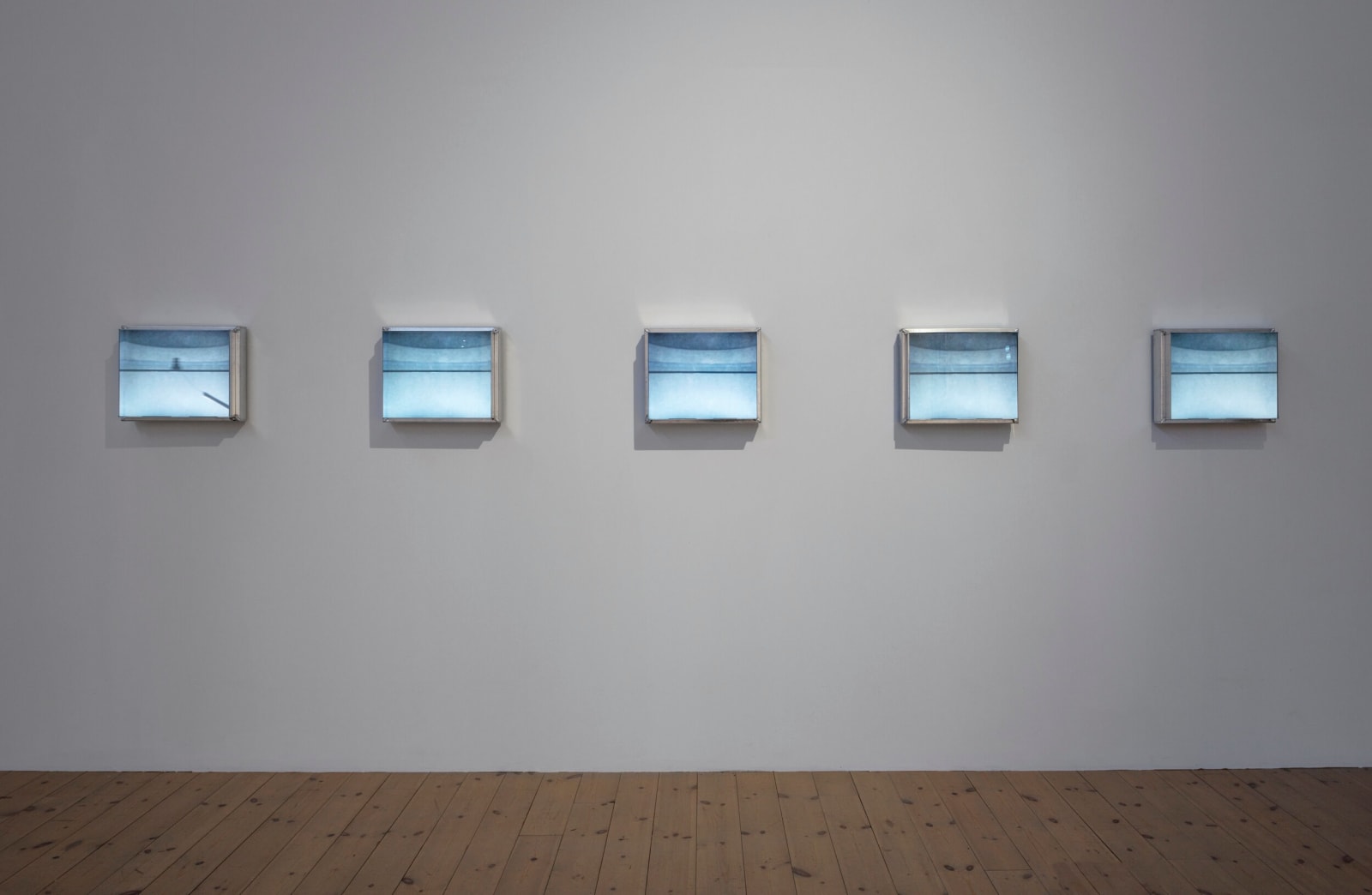Karl Dunér Swedish, b. 1963
The Draw, 2018
Film. A series of 5 connected film cabinets in aluminium, filmloop 18.52 min, monitor, plexiglas. Each film cabinet is H34 x L41 x D21 cm
H34 x L369 x D21 cm
Edition of 2
Series: Films
Further images
The Draw is a work with references to games and puppetry. The Draw – Dragningen consists of a film that is divided over five film cabinets in an aluminium housing,...
The Draw is a work with references to games and puppetry. The Draw – Dragningen consists of a film that is divided over five film cabinets in an aluminium housing, a format reminiscent of an aircraft’s “black box”. The film is seen through a 50 mm thick piece of Plexiglas, filling the entire cabinet, becoming a kind of time window with the eternal and futile striving to move forward. The film itself is a single strenuous action in which a small wooden figure tries to climb a ladder in front of an arched painting. The figure’s plan is to get from the first film cabinet to and past the fifth. The difficulty turns out to be significant. The narrow span means that the figure always falls off and has to start new attempt – a reference to Sisyphus’ punishment and single-minded striving. The figure is a carved wooden figure which was probably once part of a wooden chair or table. In The Draw, the movement is no longer controlled by invisible mechatronics, but replaced by a highly tangible player who, with the help of a tool, tries to pull his figure forward.
“In the theatre i often devote myself to the concept of the void – for example, the pause between two lines or between two scenes in a play. What happens in the dialogue if the one line is not immediately followed by an answer but is delayed? When the size of the pauses lengthens, the characters of the roles begin to crack and finally the performance itself is keeled. The strange thing is that after a certain pause is stretched to the point where the show “stops” and then stretched out a few more seconds, the show flows back in again. It is as if the dead or stalled performance begins to “live” again. This strange effect focuses on the boundaries between role and actor, between game and non-game, between action and void, between thought and emptiness”.
“In the theatre i often devote myself to the concept of the void – for example, the pause between two lines or between two scenes in a play. What happens in the dialogue if the one line is not immediately followed by an answer but is delayed? When the size of the pauses lengthens, the characters of the roles begin to crack and finally the performance itself is keeled. The strange thing is that after a certain pause is stretched to the point where the show “stops” and then stretched out a few more seconds, the show flows back in again. It is as if the dead or stalled performance begins to “live” again. This strange effect focuses on the boundaries between role and actor, between game and non-game, between action and void, between thought and emptiness”.
1
of
7





